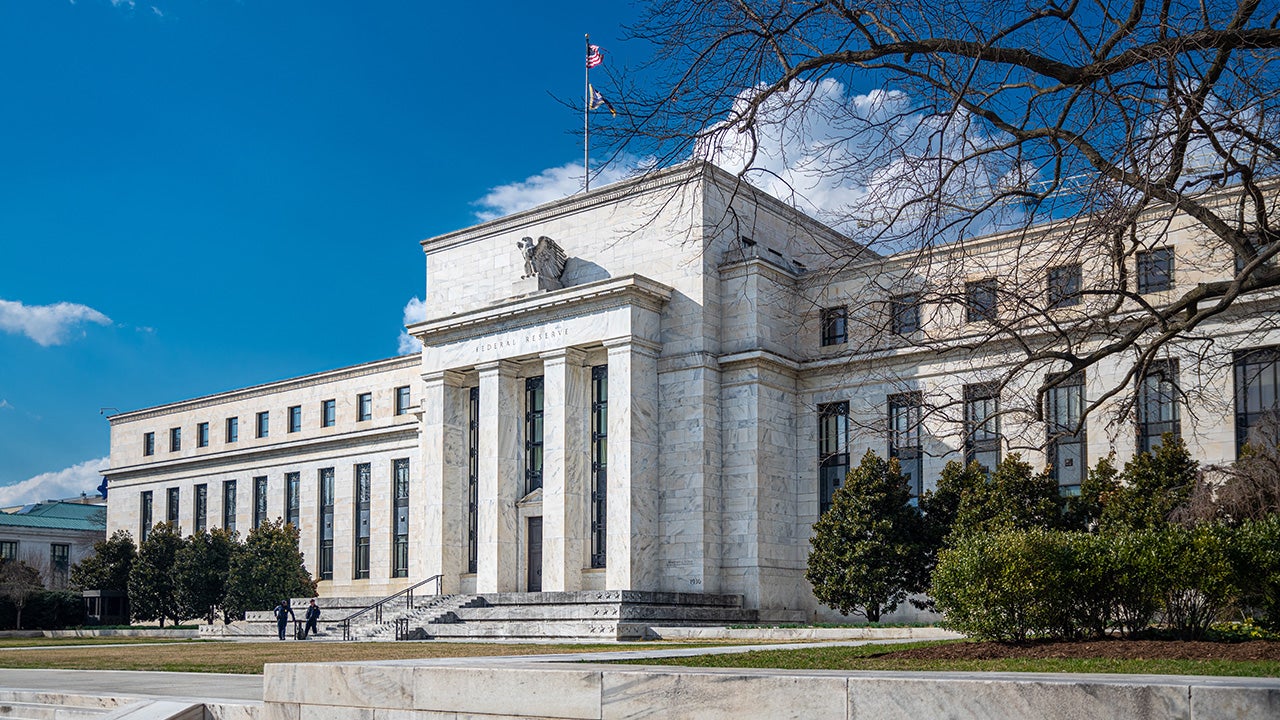Investment implications in the event that the Fed delays rate cuts

US Q1 GDP came in below expectations at 1.6% annualized vs consensus estimates of 2.5% though markets are likely to focus on the core Personal Consumption Expenditures (PCE) inflation data for March, which came in above expectations at 3.7% annualized vs consensus estimates of 3.4%.1
Source: U.S. Bureau of Economic Analysis (BEA). Data as at 26 April 2024.
Despite the weaker Q1 GDP figure, our hopes for a June Fed rate cut have been dashed due to a re-acceleration of inflation readings in March’s CPI, PCE and retail sales numbers.
However, we still expect the Fed to make its first rate cut sometime in Q3, with a total of 2 or 3 cuts for the year.
We do not envisage another rate hike – we have always maintained that the disinflationary process in the US is going to be uneven with bumps along the road.
Now, it’s clear that these bumps may be pushing out the first rate cut – but not all is lost.
At the end of the day, we believe that strong growth in the US is better for global risk assets even without rate cuts than weak growth and falling inflation with rate cuts.
A closer look at recent economic data
Now, looking more closely at the recent economic data, growth in Q1 disappointed due to weaker exports and lower government spending though household consumption and private enterprise spending were robust.
While certain segments of the US economy continue to positively surprise, so too, have the recent CPI inflationary readings.
This doesn’t necessarily mean that the disinflationary progress has been abandoned – the process is just not as smooth as we hope it to be.
Recent expectations by some market participants for a further rate hike have been catalyzed by a robust labor market that has fed to stronger inflationary pressures and consumption.
Let’s remember that the current interest rate environment remains quite restrictive and we believe that the possibility of a rate hike is minimal, though all eyes will be on the next monthly labor market and CPI print.
Overall, the US economy continues to experience broad disinflationary forces – for example, strong immigration numbers have also helped to bring balance to labor markets.
No doubt, the US economy remains highly robust, but some data suggests consumers are starting to experience some headwinds.
For example, US credit card delinquencies in Q4 reached the highest levels since Philly Fed records began in 2012.
The urgency to loosen conditions may have diminished
The general sentiment from the cast of The Federal Open Market Committee (FOMC) members seems to be that the current monetary policy is restrictive, though perhaps the urgency to loosen conditions has diminished.
Fed Chair Powell noted that the Fed has the flexibility to “maintain the current level of restriction for as long as needed” depending on the incoming data.
Investment Implications
US equities and risk assets
Should the Fed delays rate cuts, we believe that the implications for risk assets could be rather limited.
Recall that at the start of 2024, markets were pricing for 6 or 7 interest rate cuts.
Those expectations have now been tempered to be more in line with the Fed’s dot plot, but risk assets have performed well in spite of this.
US equities have hit new highs through Q1 and credit spreads are rather compressed. This isn’t altogether unusual as market sentiment has picked up through the year.
Clearly, strong growth has outweighed the prospect of higher for longer rates.
Still, there exists a possibility for a tactical pullback as valuations are somewhat extended.
Asian equities and currencies
The implications for Asia are a little starker. Domestic fundamentals and more encouraging inflation dynamics suggest that it may make sense for Asian central banks to cut rates sooner. But they are likely to follow the US Fed policy path in a bid to defend their currencies.
That said, a stronger global trade cycle and resilient US consumption has asymmetrically benefitted some Asian exporters such as Taiwan, Japan and South Korea.
The recent performance of Asian equities also suggests that domestic factors will wield more influence over returns.
From a currency perspective, a strong greenback looks set to continue for now and may have an impact on the BOJ and PBOC, two central banks trying to limit a strong USD against their own currencies. We expect the BOJ to hike rates in either their June or July meeting.
Source: Macrobond and Invesco. Data as at 26 April 2024.
Emerging Market debt
Let us also say, how positively surprised we are by the outperformance of EM debt, which we still prefer over Developed Market debt.
Brazilian, Mexican and Indonesian bonds have outperformed their DM counterparts despite an aggressive Fed, strong USD, soft economic patch in China and geopolitical risks.
This is largely because EM countries maintained fiscal prudence during COVID, can buy commodities from Russia and goods in RMB from China and are in a lot better current account shape than a decade ago.
I believe that the outlook for EM government debt remains bright even if the Fed delays its rate cuts until later this year.
Conclusion
Overall, we believe that the Fed’s path forward has become a tad murkier, though the case for delaying rate cuts for too long is flimsy.
Much of this will be dependent on incoming data. Tight labor markets could be a key risk, though we are encouraged by wage growth which is on its way down.
Investment risk
The value of investments and any income will fluctuate (this may partly be the result of exchange-rate fluctuations) and investors may not get back the full amount invested.





